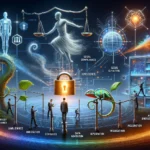Public transportation is more than just a way to get from point A to point B. It’s a lifeline for many, connecting people to jobs, education, and essential services. But as cities grow and change, so too must our transit systems. Enter the digital age, where technology promises to revamp urban mobility, making it not only more accessible but also more sustainable and efficient. Let’s dive into how digital tools are reshaping public transportation and why a comprehensive strategy led by governments at every level is crucial for truly inclusive and effective transit solutions.
Breaking Down the Digital Revolution in Transit
Imagine a world where catching a bus or train is as easy as ordering a coffee. Thanks to digital technology, this is fast becoming a reality. Here’s a snapshot of what’s changing:
- On-Demand Transit: Services like vans or minibuses now operate with flexible routes, offering rides when and where needed, especially in underserved areas.
- Integrated Apps & Contactless Payments: One app to rule them all – plan your journey, pay fares, and even combine different transport modes seamlessly.
- Smart Infrastructure: From sensors that optimize train schedules to traffic systems that prioritize buses, technology is making public transport more reliable and punctual.
- Green Transit: Electrification of buses and trains, coupled with smart battery management, is paving the way for cleaner, greener journeys.
The Blueprint for Transformation
However, technology alone won’t solve all our transit troubles. A broader, government-led overhaul is necessary. Here’s what needs to happen:
1. Plan Together: Housing & Transport
- The Challenge: Often, housing and transport planning operate in silos, missing out on creating accessible, affordable living and commuting solutions.
- The Solution: Integrate affordable housing with public transport and vice versa, ensuring that low-income households have easy access to transit.
2. Enhance Shared Mobility
- The Challenge: Traditional fixed-route buses and trains need to mesh with modern shared services like bike-sharing and ride-hailing for a truly cohesive transit system.
- The Solution: Create a unified mobility ecosystem that offers various options, ensuring safe and convenient pathways for all modes of transport, including walking and biking.
Overcoming Barriers
While the roadmap is clear, several hurdles stand in the way:
- Funding: The high initial cost of infrastructure and technology can be daunting. Solutions include targeted investments and leveraging digital tech to optimize operations and reduce long-term costs.
- Equity: Ensuring that digital advancements benefit everyone, especially the most vulnerable, is vital. Measures like discounted passes for low-income individuals and alternative payment options for those without digital access are essential.
- Safety and Sustainability: Regulatory frameworks must address safety concerns, especially for micromobility options, and support the electrification of transit to reduce emissions.
A Collaborative Effort
Achieving a digitally enabled, equitable, and efficient public transport system requires a concerted effort from all levels of government:
- Municipalities must ensure equity is a core consideration in transit decisions.
- Provincial and Territorial Governments should foster integrated mobility across different transport modes.
- The Federal Government needs to support not just the infrastructure but also the operating costs and digital technologies that make modern transit systems tick.
The Road Ahead
As we navigate the future of public transportation, the integration of digital technology offers a beacon of hope for creating more inclusive, efficient, and sustainable transit systems. By addressing the challenges head-on and fostering collaboration across all levels of government, we can ensure that public transportation continues to serve as a vital connector in our communities, enabling access to opportunities for everyone, everywhere. Let’s embrace this digital journey together, paving the way for a brighter, more connected future.
















